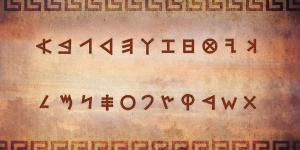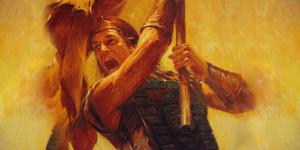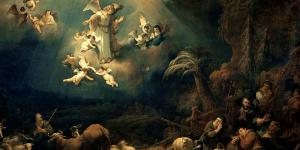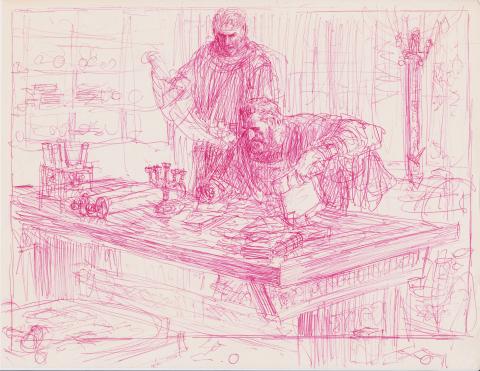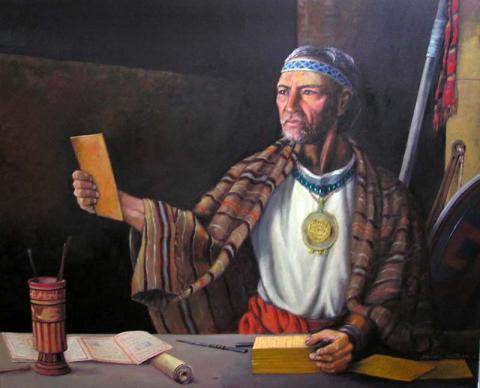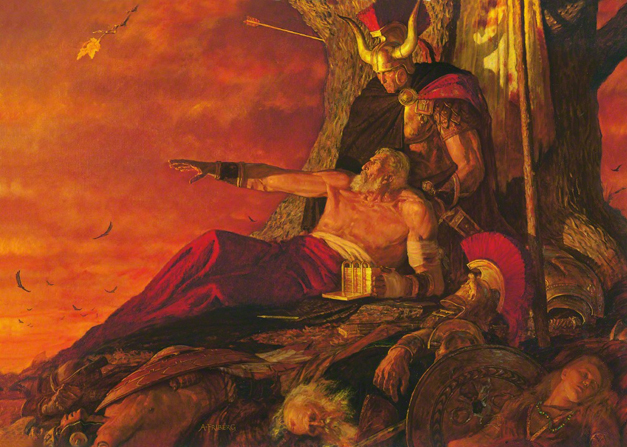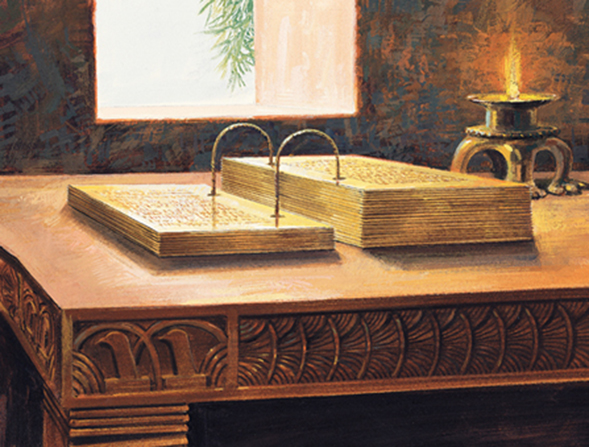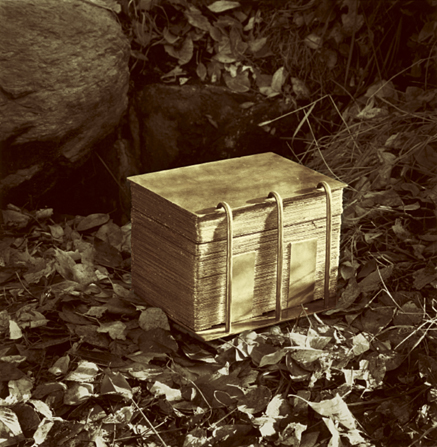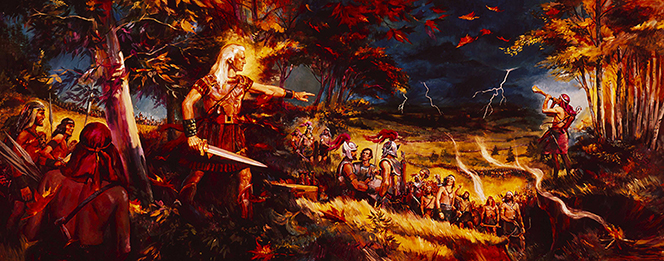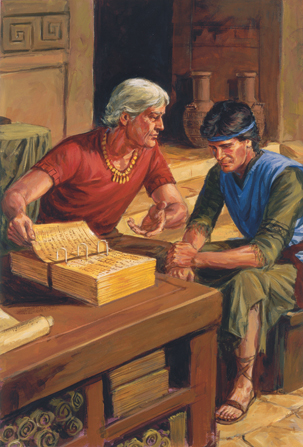You are here
Book of Mormon Central is in the process of migrating to our new Scripture Central website.
We ask for your patience during this transition. Over the coming weeks, all pages of bookofmormoncentral.org will be redirected to their corresponding page on scripturecentral.org, resulting in minimal disruption.
Gospel Doctrine Lesson #44: I Speak unto You As If Ye Were Present

Scripture Block
Mormon 7-9
To help class members understand the warnings and counsel given by Mormon and Moroni to people living in the latter days.
Lesson Manual
KnoWhys
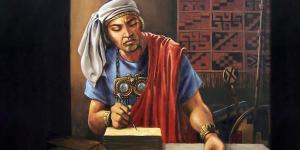
Why Did Moroni Write So Many Farewells?
Mormon 8:1

Why Is “Words Of Mormon” At The End Of The Small Plates?
Words of Mormon 1:3
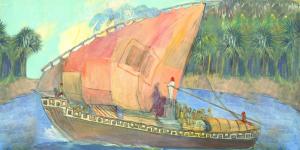
Why Did Mormon Mention Hagoth?
Alma 63:8

Why Did Mormon Introduce Himself in 3 Nephi 5?
3 Nephi 5:12
Articles
Overview of Mormon
LeBaron, E. Dale. "Ether and Mormon: Parallel Prophets of Warning and Witness." In The Book of Mormon: Fourth Nephi Through Moroni, From Zion to Destruction, edited by Monte S. Nyman and Charles D. Tate, Jr., 153-165. Provo, UT: Religious Studies Center, 1995.
This paper shows the similarities and differences of Ether and Mormon's ministries. Ether and Mormon were different in their backgrounds and situations, and similar in their missions and convictions.
Baker, LeGrand L., and Stephen D. Ricks. "Mormon’s Outline of the Book of Mormon." In Who Shall Ascend into the Hill of the Lord?: The Psalms in Israel’s Temple Worship in the Old Testament and in the Book of Mormon, 472-474. 2nd ed. Salt Lake City: Eborn Books, 2011.
This short article structures the entire outline of the Book of Mormon, in order to see Mormon's logic in abridging the Book of Mormon. Mormon redacted and organized the Book of Mormon to emphasize the importance of covenants, ordinances, and the temple in many instances.
Gardner, Brant A.. Mormon’s Editorial Method and Meta-Message In 2008 FAIR Conference. Sandy, UT: FairMormon, 2008.
Gardner seeks to provide a commentary on Mormon's life and work of the Book of Mormon. He begins by laying out what is known of Mormon's life. Then he delves into how he pieced together the Book of Mormon. He explains the outline of the Book of Mormon, reasoning behind book names, the sources behind his accounts, and how Mormon interacted with his record.
Holzapfel, Richard Neitzel. "Mormon, the Man and the Message." In The Book of Mormon: Fourth Nephi Through Moroni, From Zion to Destruction, edited by Monte S. Nyman and Charles D. Tate, Jr., 117-131. Provo, UT: Religious Studies Center, 1995.
Mormon was not only the abridger of the plates, but he was a Nephite record-keeper, a general, an apostle and prophet, a father, and he may have also been a prophetic type.
Roundy, Phyllis Ann. Mormon In Encyclopedia of Mormonism, Edited by Daniel H. Ludlow. Vol. 2. New York: Macmillan, 1992.
An encyclopedic entry on Mormon, his life, works, and the book of Mormon.
Hatch, Gary Layne. "Mormon and Moroni: Father and Son." In The Book of Mormon: Fourth Nephi Through Moroni, From Zion to Destruction, edited by Monte S. Nyman and Charles D. Tate, Jr., 105-115. Provo, UT: Religious Studies Center, 1995.
This article provides commentary on Mormon's work as a general and abridger of records. He walks through the narrative of Mormon's life and comments on Moroni's relationship with his father. Through years of work and faith, Mormon and Moroni were able to compile the magnificent record of the Book of Mormon.
Hardy, Grant. "Mormon's Agenda." In Reexploring the Book of Mormon, edited by John W. Welch, 245-247. Provo, UT: FARMS, 1992.
This short piece highlights one of Mormon's main purposes in writing this sacred record. As he demonstrates in Helaman and Mosiah, Mormon wants to show that unless the Lord afflicts his people, they will not remember Him.
Hyde, Paul Nolan. A Comprehensive Commentary of the Title Page of the Book of Mormon. Orem, UT: Parrish Press, 2015.
This volume provides extensive commentary on the Title Page of the Book of Mormon, written by the hand of Mormon. This title page serves as an introduction and preface to all that the reader encounters in the Book of Mormon, and reflects Mormon's own feelings about the work and the Gospel of Jesus Christ.
Butler, John M.. "The 'Author' and the 'Finisher' of the Book of Mormon." In The Book of Mormon: Fourth Nephi Through Moroni, From Zion to Destruction, edited by Monte S. Nyman and Charles D. Tate, Jr., 61-68. Provo, UT: Religious Studies Center, 1995.
In the Church we speak of Jesus Christ as the author and finisher of our faith (Moroni 6:4; Heb. 12:2). This paper examines and compares Mormon as an "author" and Joseph Smith as a "finisher" of the Book of Mormon. Perhaps no other prophet personifies the preparation and achievements of Joseph Smith better than the prophet Mormon. He was a type for the Prophet Joseph—foreshadowing Joseph's life and important mission.
Hardy, Grant, and Robert E. Parsons. Book of Mormon Plates and Records In Encyclopedia of Mormonism, Edited by Daniel H. Ludlow. Vol. 1. New York: Macmillan, 1992.
Encyclopedic entry on how the various records and plates are compiled to form the current Book of Mormon.
Hardy, Grant. Gold Plates In Encyclopedia of Mormonism, Edited by Daniel H. Ludlow. Vol. 2. New York: Macmillan, 1992.
This encyclopedic entry explains the contents of the gold plates, and how they came to be in their current form.
Mormon 7
Volluz, Corbin T. "'O Death, Where Is Thy Sting?'" Insights 25, no. 6 (2005)
Mormon 7:5 declares Christ's victory over the grave in what appears to be a quotation or at least allustion to 1 Corinthians 15:55. Scholars have speculated that this idea may have originated from a common source that predates both Paul and the Book of Mormon prophets. The Gospel of Nicodemus provides interesting parallels that may support the idea of an earlier text.
Mormon 8
Pratt, Parley P.. An Angel from on High (Men's Choir), Edited by John E. Tullidge., 1985.
Sheet music of and LDS hymn describing Mormon and Moroni's role in preserving the gold plates, leading to the restoration of Christ's gospel.
Thomas, Mark D. "Moroni: The Final Voice." Journal of Book of Mormon Studies 12, no. 1 (2003): 119-120.
Moroni, the final writer and compiler of the Book of Mormon, provides three endings to the book. His first ending, in Mormon 8–9, can be called a “signature ending”—the primary purpose here is to state that the writing is finished and to identify the author and his father and nation. Moroni, yet alive, provides a second ending, a “farewell ending,” in Ether 12. This type of ending both concludes the work and wishes the reader well but then warns or rejoices that the narrator will meet the reader at the final judgment. In the final farewell ending (in Moroni 10), Moroni, the lone survivor of his people, expresses joy and hope. The three endings remind latter-day readers to acknowledge the destruction of the Nephite and Jaredite nations and provide doctrinal, logical, and scriptural arguments in defense of the Book of Mormon and its doctrines.
Peterson, H. Donl. "Moroni, the Last of the Nephite Prophets." In The Book of Mormon: Fourth Nephi Through Moroni, From Zion to Destruction, edited by Monte S. Nyman and Charles D. Tate, Jr., 235-249. Provo, UT: Religious Studies Center, 1995.
To complete and preserve the great abridgment of the Nephite history from destruction, Mormon asked Moroni to finish it and then "hide up the records in the earth" until the Lord would have them discovered (Mormon 8:4).
Mormon 9
Van Orden, Bruce A.. "Preach the Gospel to Every Creature." In The Book of Mormon: Fourth Nephi Through Moroni, From Zion to Destruction, edited by Monte S. Nyman and Charles D. Tate, Jr., 323-336. Provo, UT: Religious Studies Center, 1995.
In the midst of his challenge to readers of the Book of Mormon to exercise faith and build trust in Jesus Christ, Moroni cited a statement the Lord made to his disciples when he visited them in the new world, telling all to go "into all the world, and preach the gospel to every creature."
Gee, John. "Two Notes on Egyptian Script." In Pressing Forward with the Book of Mormon: The FARMS Updates of the 1990s, edited by John W. Welch and Melvin J. Thorne, 244-247. Provo, UT: FARMS, 1999.
In Mormon 9:32, Moroni informs the reader that the Book of Mormon is written in reformed Egyptian. John Gee proposes two possibilities of Egyptian script that may represent the Book of Mormon's "reformed Egyptian": abnormal hieratic and carved hieratic.
Ricks, Stephen D. "Semitic Texts Written in Egyptian Characters." In Pressing Forward with the Book of Mormon: The FARMS Updates of the 1990s, edited by John W. Welch and Melvin J. Thorne, 237-243. Provo, UT: FARMS, 1999.
In discussing the nature of "reformed Egyptian," Stephen Ricks proposes that it could be Hebrew that instead of being translated, was rather transcribed into Egyptian hieratic. Several examples show that some Israelites were familiar with both languages and could transcribe Hebrew into Egyptian characters.
"The Book of Mormon and Reformed Egyptian," FairMormon entry.
This entry deals with the criticism that Israelites did not write in Egyptian. Recent discoveries have shown that some Israelites during the time of Lehi were indeed literate in Egyptian and traded with them.
Stubbs, Brian. "Hebrew and Uto-Aztecan: Possible Linguistic Connections." In Reexploring the Book of Mormon, edited by John W. Welch, 279-281. Provo, UT: FARMS, 1992.
In a different approach to the subject of reformed Egyptian, Brian Stubbs studies the linguistic evolution of Uto-Aztecan and finds possible connections to Semitic languages such as Hebrew.
Tvedtnes, John A. "Inscribed Gold Plate Fits Book of Mormon Pattern." Insights 28, no. 1 (2008).
This short note highlights an important discovery for the Book of Mormon. A third century AD Jewish burial revealed a small gold plate inscribed with a Hebrew text. However, the Hebrew text was not written with the Hebrew alphabet, but rather with the Greek alphabet.
Smith, Robert F.. "The "Golden" Plates." In Reexploring the Book of Mormon, edited by John W. Welch, 275-278. Provo, UT: FARMS, 1992.
Moroni talks about the size of the gold plates in Mormon 9:33. This article talks about how large the gold plates probably were. The possible dimensions and weight are surmised from various accounts by Joseph Smith and witnesses of the plates.
Tvedtnes, John A. and Stephen D. Ricks. "Notes and Communications: Jewish and Other Semitic Texts Written in Egyptian Characters." Journal of Book of Mormon Studies 5, no. 2 (1996): 156-63.
An Egyptian script was possibly used to write Hebrew text on the Nephite record. Documents from the correct location and time period have texts and languages in varying scripts that lend credence to this scribal phenomenon.
Jensen, Jay E. "The Precise Purposes of the Book of Mormon." Religious Educator: Perspectives on the Restored Gospel 4, no. 1 (2003): 1-11.
Moroni summarized his father's intent in a purpose statement in Mormon 9. It has many similarities to the concluding chapter of the Book of Mormon, Moroni 10.
Additional Lesson Guides
LDSLiving Gospel Doctrine Lesson #44
RSC Gospel Doctrine Lesson #44
Meridian Magazine Gospel Doctrine Lesson #44
John Bytheway Gospel Doctrine Prep Lesson #44
GospelDoctrine.com Mormon 7, Mormon 8, Mormon 9
Feast Upon the Word notes on Gospel Doctrine Lesson #44
Jim Faulconer's notes on Gospel Doctrine Lesson #44
Joel's Monastery blog post on Gospel Doctrine Lesson #44

